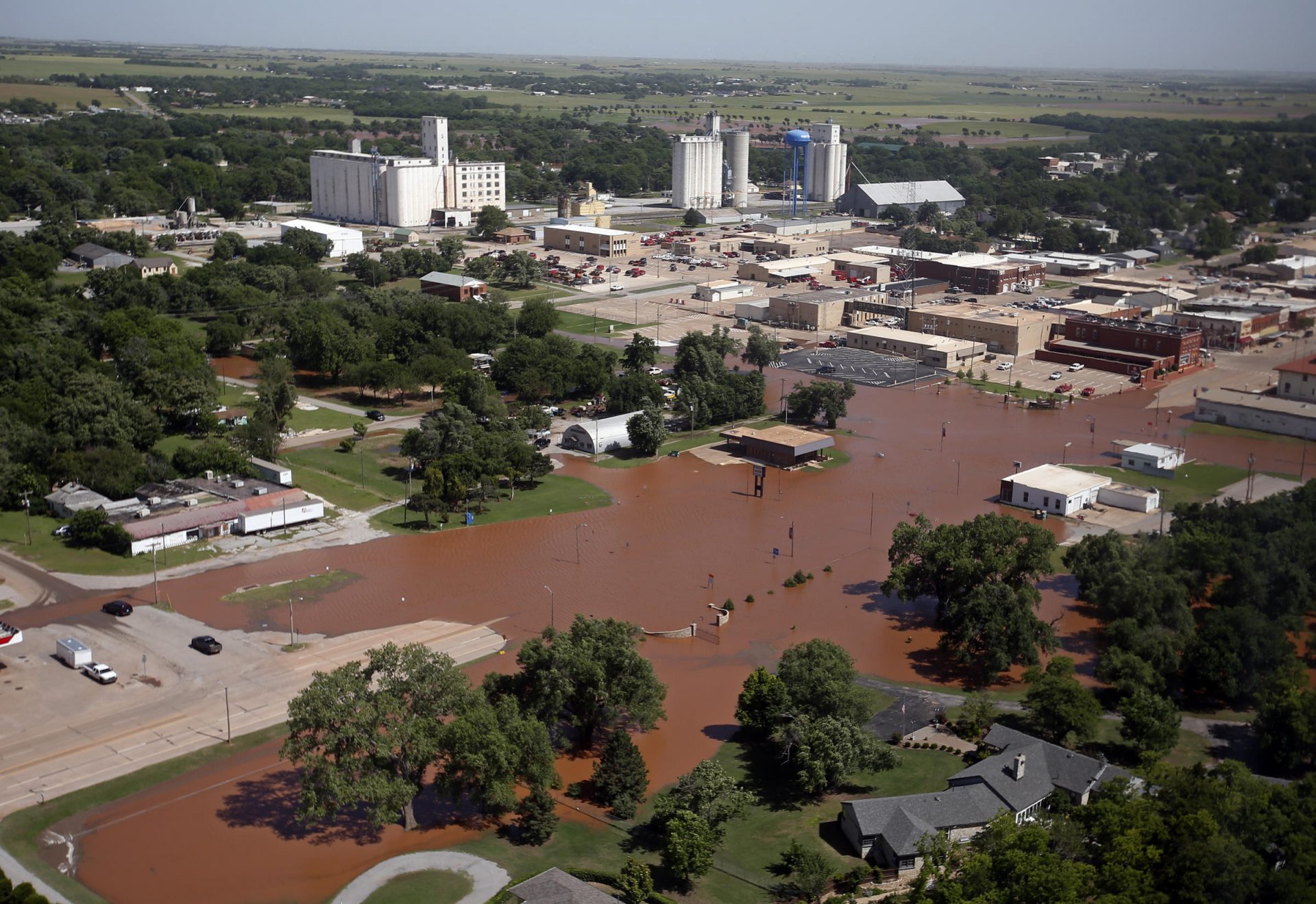
Flooding in Kingfisher, Okla. is pictured Tuesday, May 21, 2019. Flooding following heavy rains was an issue across the state.
Sue Ogrocki/AP Photo


Flooding in Kingfisher, Okla. is pictured Tuesday, May 21, 2019. Flooding following heavy rains was an issue across the state.
Sue Ogrocki/AP Photo
With extreme floods all over the world filling headlines, researchers at the University of Oklahoma predict things will only get worse.
OU researchers partnering with the National Oceanic and Atmospheric Administration used computer modeling to predict just how much climate change will affect extreme flooding — and the outlook is wet.
JJ Gourley is a research hydrometeorologist with NOAA and worked on the project.
“You can compare the rain systems that are produced nowadays and then compare those to what they would look like in the future under warmer temperatures and higher humidity and compare those,” Gourley said. “And what we found is that the rain systems are becoming much larger. They’re covering basically twice the area that they are today.”
Not only are the systems taking up more real estate, but they’re also likely to become more severe. Research findings indicate that rainfall events will double, and there will be a 45% increase in the extent of flooding. This comes after a study published earlier this year by the same researchers found that during flash flood events, water levels will rise significantly faster and higher.
Along with heavier, more frequent and more widespread flooding, the researchers found there will also be more seasonal variability, which means fall and winter will likely see more extreme rainfall.
Gourley said warmer conditions in the Mountain West region are causing snowpack to melt earlier and faster. Normally, there’s a buffer period between when precipitation falls as snow, it accumulates, and then it releases runoff more gradually. It can also create situations where rain falls on accumulated snow and melts it faster.
In the eastern side of the country, the story’s a little different. Higher evaporation is causing drier soils, which Gourley said can act as a buffer to rainfall — but only to a degree. Researchers still show increasing flood frequency and magnitude in the future.
“If you get warmer temperatures, then the atmosphere can retain much more water vapor. And with much more water vapor, then you can produce higher rainfall rates,” Gourley said. “Under warmer conditions, you also change some of the dynamics of rain systems as well. You get deeper storms, you get stronger updrafts. And because of that, the scales increase significantly.”
Yang Hong, a professor of hydrology and remote sensing at OU, said aging flood infrastructure is an urgent concern. Hundreds of Oklahoma dams are past their life expectancy, and nearly all Oklahoma residents — about 93 percent — live within 20 miles of a flood control dam.
“That’s alarming,” Hong said. “I think for scientists, governments and the society, we need to be aware of this possibility. We need to come up with a solution.”
Combined with hurricane events like the one in Florida that took the lives of over 100 people, Hong said the country is going to face flooding not just from the skies, but from the coasts.
“I couldn’t believe more than 100 people died in the U.S.,” Hong said. “We hear this news from some other countries, but I just couldn’t believe it. … It’s going to be a problem that we have to deal with in the future.”
Lower income neighborhoods are impacted more severely by flooding and take longer to recover from it. Gourley said society’s most vulnerable could be bearing the brunt of climate-caused flooding.
“Floods tend to strike vulnerable populations,” Gourley said. “So folks that are living in low-lying areas, and a lot of transient populations live near streams and creeks, and these are dangerous places to be.”
The researchers said they’re now looking at the impacts of flooding on individual communities. Hong said they’re working with the Chickasaw and Choctaw Nations, as well as Latino communities in the Southeast.
“Impact-based forecasting is something else that we’re working on, to try to get more specific to what affects people,” Gourley said. “So in other words, where do we have low water crossings? Where do we have people intersecting those low water crossings? And try to identify these trouble points so that forecasters can better highlight those, and then the local people with boots on the ground can go to those regions.”